You will be met on arrival at Maun Airport by your photo guide and a transfer representative, and transferred by light aircraft to Hyena Pan's landing strip. Here you will be met by your game ranger and transfer in open 4x4 safari vehicle to camp.
Check in at your camp which will be your home for the next 7 days.
The camp is set amongst a grove of mopane trees, and the eight tents look over a watery lagoon of the same name. This isn’t a place for those looking for opulence and extravagance; it’s a private piece of big-game Africa, where the wildlife encounters are authentic, intimate and always wild.
Located in the Khwai Private Reserve which is positioned between Moremi Game Reserve, Chobe National Park and the Khwai River, this exclusive concession is a meeting point for more animals than you imagine. Think nomadic herds of elephant and buffalo, lion, leopard and wild dog fiercely defending their territories, as well as kudu, red lechwe and herds of dainty antelope dotted across the plains.
Hyena Pan has eight tents, and inside, you will find stylish simplicity plus a whole lot of character. There is you need, and nothing you don’t. Each tent has twin beds, mesh nets keep the mosquitoes out, and there’s an electronic safe to store valuables, along with a luggage rack and wardrobe. Each tent is solar powered, with international plug points. A gas geyser pumps constant hot water to the en-suite bathroom and shower.
The heart of the camp is where you will find the dining deck and lounge areas. From here, watch the animals coming to drink at the waterhole or float in the mini-splash pool and watch the wildlife doing the same below. Meals are wholesome and tasty. When darkness falls, spotlights illuminate the waterhole and you may well see nocturnal creatures coming to drink.
What to bring:
Camera DSLR / mirrorless
Lenses 300 mm or bigger
Lens for landscape 16 - 35mm (preferably f2.8) - lenses need lens hood
Cover for dust and rain
Tripod
4x Memory cards (32 Gb or more)
Ideally also bring Laptop with Lightroom and / or Photoshop
Card reader
Lens cleaning kit
Note block and pen
Also important to bring:
Good attitude
Sun block factor 30 or higher
Cap / sunhat
Light walking shoes
Shorts
Swimming costume
Rain jacket
Warm jacket (fleece) - sitting on an open safari vehicle at sunrise can be chilly!
If travelling during winter (April - October), also bring windproof jacket and scarf, it can be incredibly cold early morning and evening on the open safari vehicle!
It is essential that you travel with adequate medical travel insurance, which should also include special medical evacuation cover.
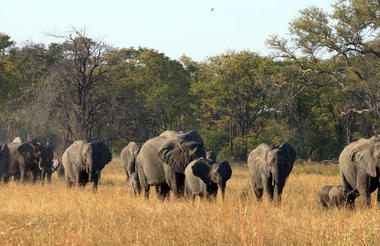
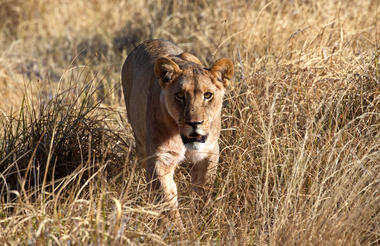
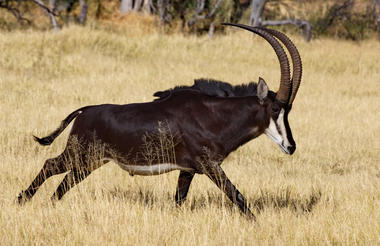
Important information regarding the scheduled air transfer to camp:
Baggage is STRICTLY restricted to 20kg (includes hand luggage and camera equipment) in soft-sided luggage. No hard suitcases and no bags with frames can be transported as they physically cannot fit into the aircraft pod/luggage compartment.
The maximum dimensions of the soft bags which can be accommodated are as follows: 25cm (10 inches) wide x 30cm (12 inches) high and 62cm (24 inches) long. Large suitcases are stowed free of charge at the Maun airport office if needed for onward travel.
All flights into and out of Maun will be scheduled around the times of Air Botswana (BP212 & BP211) and SA Airlink (SA8300, SA8301, SA8302, SA8303, SA8601 & SA8602).
Guests must be aware that they may, on occasion, make up to three stops before arriving at their destination.
The reserve borders the lush Moremi Game Reserve to the south, and the wilderness of Chobe National Park to the east, both of which are part of the larger Okavango Delta World Heritage Site.
Khwai is one of Botswana’s densest, big-game areas, with dense mopane woodland that the world’s largest population of elephant. There are no barriers and no fences interrupting their movement into Khwai.
Keep your cameras ready! Giraffe and elephant come from the north, whilst herds of buffalo and zebra migrate from the south, joining the resident hippo who fight fiercely for their space. Then come the big cats. On some Botswana safaris, you enjoy brief glimpses of these predators but the local guides know exactly where the territorial lines are drawn, and what to find, where. There’s a good chance you’ll see lion on the prowl, leopard slinking through the trees, as well as cheetah and even wild dog.
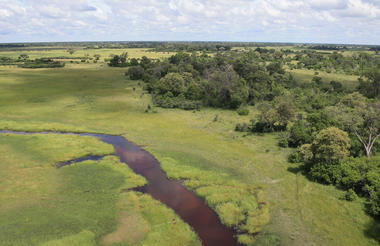
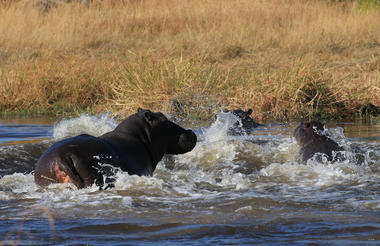
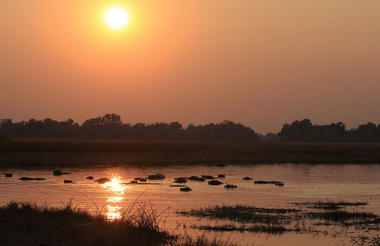
Each day at your photo safari lodge will follow this programme (excluding arrival and departure day):
Early morning Wake up with tea / coffees and snacks - Morning game drive: (3 hours)
A photo safari morning starts a little before sunrise! For many, this is a big challenge, but nevertheless imperative, in order to take full advantage of the golden morning light which embellishes most wildlife and nature images. This is also the time of day when most animals are active, so the mornings should give you some great opportunities for capturing striking images.
An early wake-up call is usually made approximately 30 minutes ahead of departure in an open game viewing vehicle. This allows for a quick wash and a hot beverage just to get those creative juices flowing….
After a pre-check and briefing by your photo guide (including giving some suggestions for camera settings and a brief over-view of what to expect on the drive), we set off. Your guide is always available on the vehicle to provide constructive suggestions and individual help during the actual drive.
About midway through the morning drive we take a comfort / coffee break in a safe area, to allow guests to stretch their legs and enjoy a hot beverage and some biscuits/rusks etc
There is more to Wildlife photography than lions, e.g. “the little things!”
Your photographic guide will help you with the camera settings for each specific situation and condition. You need to understand the basic photography terms such as aperture, shutter speed, ISO, metering, drive modes, focus selection points, etc. It is also important to know where and when you should change these settings (with wildlife photography you may miss the special shot if you are fumbling with your camera looking for which button to adjust).
Other terms you will learn:
- knowing your subject (the more you know about your subject, i.e. animal, the more likely you are able to predict its whereabouts and actions).
- how to get the shot perfect in the field – without having to do lots of editing in Photoshop afterwards!
- using RAW for maximum results
- how and when to use autofocus / manual focus
- controlling Depth of Field
- settings for night (low light) photography
- focusing on the eyes
- know what you want the image to say – tell a story? Have the images got a special feeling?
- composition: Rule of thirds
- use a flash: during day and night
- mastering birds in flight
- importance of supporting your camera
The morning game-drive usually takes about 3 hours (depending on what we see), and we then return to the lodge for a delicious brunch / late breakfast.
Between Breakfast/Bruch and Lunch/High Tea
After breakfast, photo safari guests may retire to a quiet, private corner of the camp to assess the morning results. There will be free time or optional lectures on editing (Photoshop / Lightroom) and photography tips and tricks, depending on the group and their preferences. Edit images for the presentation of your best 3 images (which will be held after dinner).
What else? Read a book, enjoy the lodge swimming pool or just sit still and listen to the sounds of the African bush.
Late Lunch / High Tea
We meet again early afternoon for a light meal, before setting off on the afternoon Game Drive (minimum 3 hours). Similar to the morning game drive, we try to find our subjects to photograph. The photo-guide will help you with some tips and tricks for sunset and night photography, using flash and lights to compose your shot. Just before twilight, a safe area is located for evening sundowners, where alcohol or soft beverages are served with lights snacks. (Drinks on the drive are usually pre-ordered before the drive sets out).
After sundowners, the guests will experience driving in darkness with a vehicle spotlight to find interesting animals/owls etc, then returning to camp.
Return to lodge after Sunset - Dinner
Time for a quick freshen up before we meet for dinner. Dinner could be a plated dinner, a buffet meal or a traditional African “Braai” (Barbeque) often served in an outside boma around an open fire.
After dinner we meet for maximum 1 hour. We will discuss and evaluate the 3 chosen images per photographer, from the last 2 game drives. These images are displayed for the group to see, with each image being discussed as a group and critiqued by your photo guide. It is NOT a competition, but an opportunity to learn by gaining an understanding of what constitutes a good image.
Bed time: a well-deserved rest after this exciting day in the African Bush. Remember, early start tomorrow!
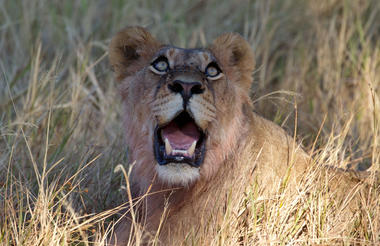
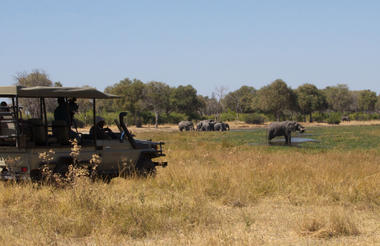
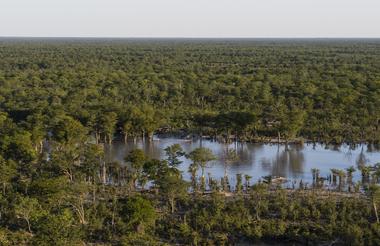
4 full days photo safari, and so many photo opportunities.
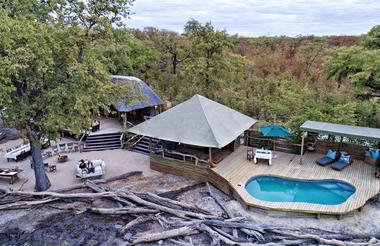
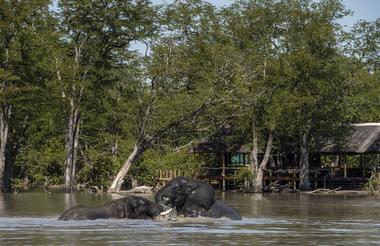

Say goodbye to your hosts at Camp, transfer to the airstrip and onward to Maun by light aircraft. The tour ends with arrival Maun Airport.



